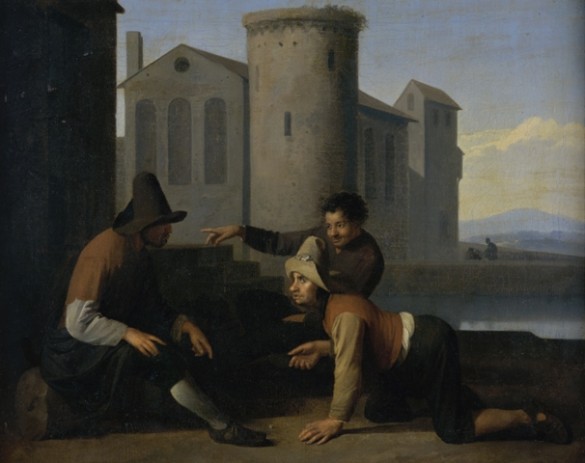Written by Jocelyn Boigenzahn, Curatorial Intern
The Verelst family was something of an artistic dynasty. Pieter Harmensz Verelst was born in Dordrecht around 1618. In 1656, the artist participated in the foundation of the Confrèrie Pictura, the predecessor of the Royal Academy of Art at the Hague.

Pieter Verelst (Dutch, 1618 – 1678), Beggars Gambling, 17th century, oil on canvas, 11 1/4 x 14 1/2 in., Purchased with funds from Membership Contributions, AP.1963.9.1.
This painting depicts a street scene where we see peasants or beggars actively rolling dice. The one rolling and his associate behind him are looking intently at the shadowed figure wearing a hat in the bottom left corner of the painting. In the background, a large Romanesque church dominates the scene bathed in light standing out against the luminous, Mediterranean sky.
The contrast of the shadowing of the three figures gambling and the bright Romanesque church in the back demonstrates the use of light in this painting and may emphasize a message of moral versus immoral behavior. The use of light and color serve to reinforce the contrast between the immoral gambling in the shadows and the righteous and moral light of the church.


